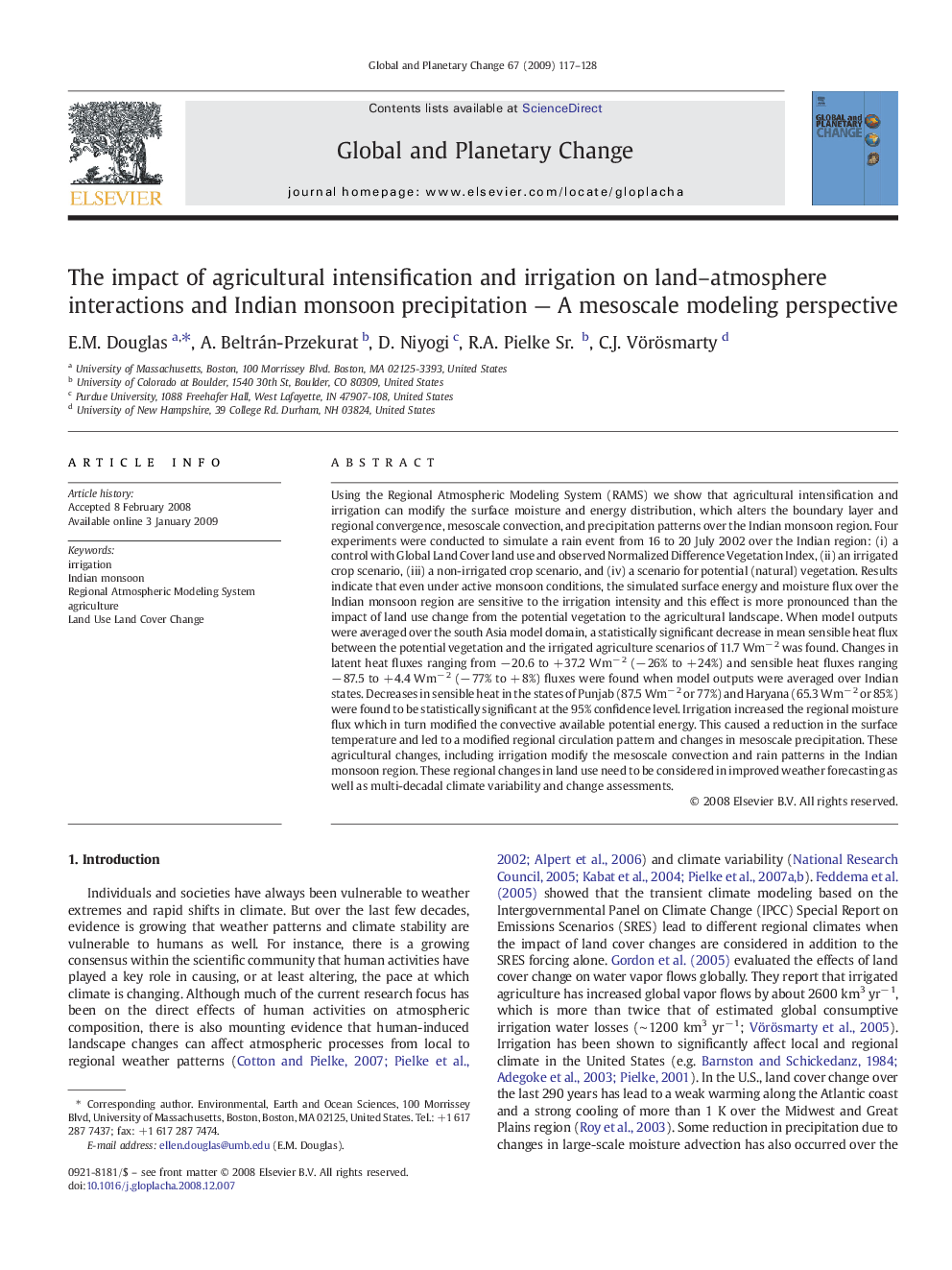| کد مقاله | کد نشریه | سال انتشار | مقاله انگلیسی | نسخه تمام متن |
|---|---|---|---|---|
| 4464064 | 1621712 | 2009 | 12 صفحه PDF | دانلود رایگان |

Using the Regional Atmospheric Modeling System (RAMS) we show that agricultural intensification and irrigation can modify the surface moisture and energy distribution, which alters the boundary layer and regional convergence, mesoscale convection, and precipitation patterns over the Indian monsoon region. Four experiments were conducted to simulate a rain event from 16 to 20 July 2002 over the Indian region: (i) a control with Global Land Cover land use and observed Normalized Difference Vegetation Index, (ii) an irrigated crop scenario, (iii) a non-irrigated crop scenario, and (iv) a scenario for potential (natural) vegetation. Results indicate that even under active monsoon conditions, the simulated surface energy and moisture flux over the Indian monsoon region are sensitive to the irrigation intensity and this effect is more pronounced than the impact of land use change from the potential vegetation to the agricultural landscape. When model outputs were averaged over the south Asia model domain, a statistically significant decrease in mean sensible heat flux between the potential vegetation and the irrigated agriculture scenarios of 11.7 Wm− 2 was found. Changes in latent heat fluxes ranging from − 20.6 to + 37.2 Wm− 2 (− 26% to + 24%) and sensible heat fluxes ranging − 87.5 to + 4.4 Wm− 2 (− 77% to + 8%) fluxes were found when model outputs were averaged over Indian states. Decreases in sensible heat in the states of Punjab (87.5 Wm− 2 or 77%) and Haryana (65.3 Wm− 2 or 85%) were found to be statistically significant at the 95% confidence level. Irrigation increased the regional moisture flux which in turn modified the convective available potential energy. This caused a reduction in the surface temperature and led to a modified regional circulation pattern and changes in mesoscale precipitation. These agricultural changes, including irrigation modify the mesoscale convection and rain patterns in the Indian monsoon region. These regional changes in land use need to be considered in improved weather forecasting as well as multi-decadal climate variability and change assessments.
Journal: Global and Planetary Change - Volume 67, Issues 1–2, May 2009, Pages 117–128